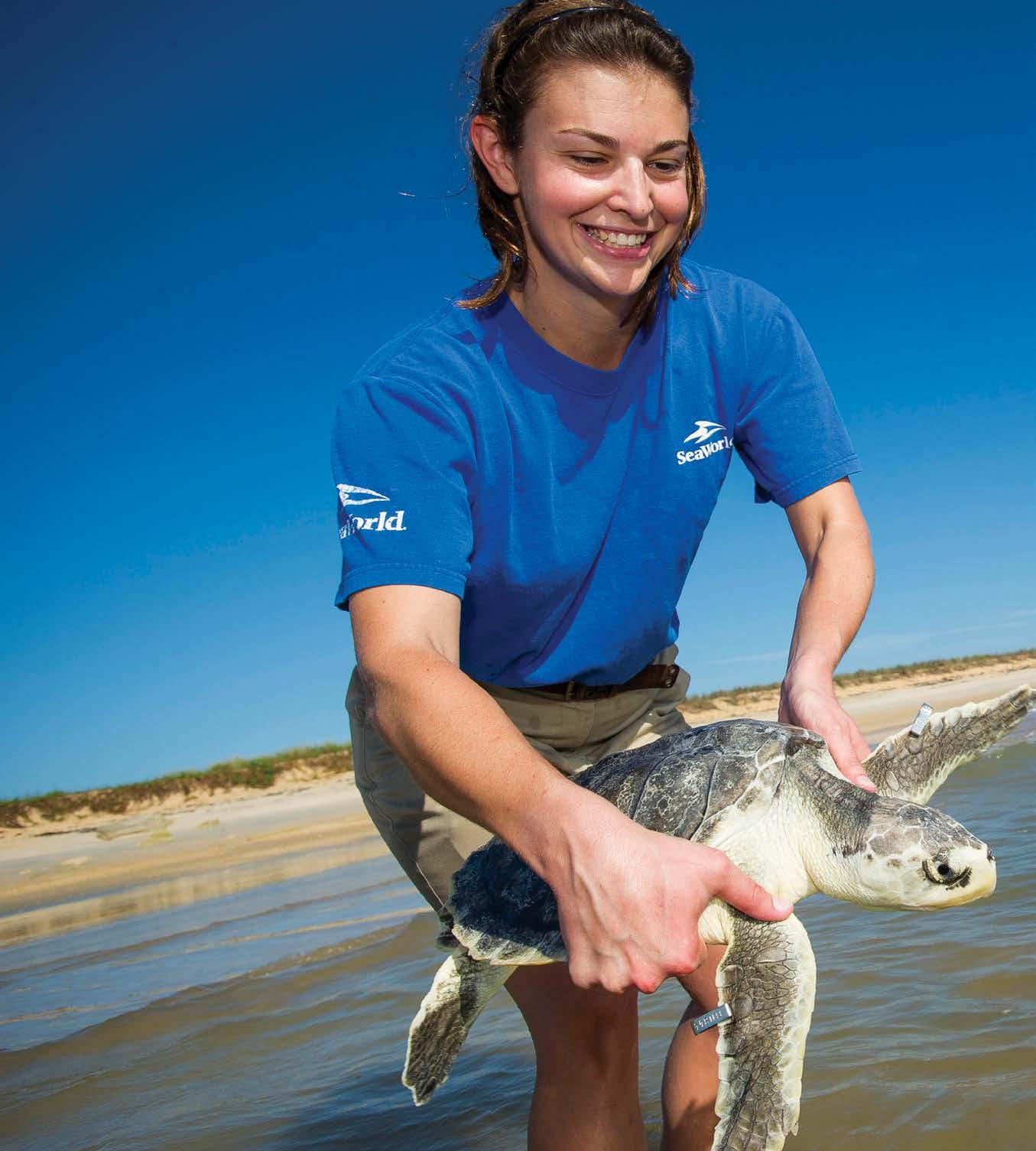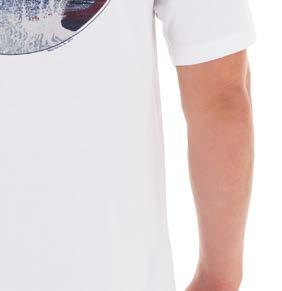
28 minute read
Shopping Guide
5
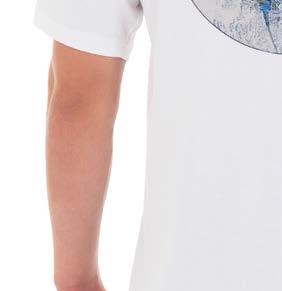
6
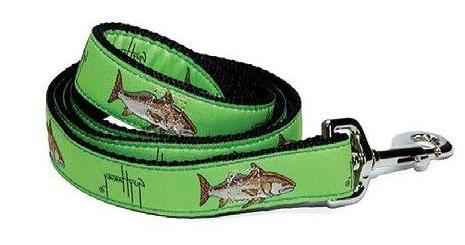



7
5. Guy Harvey Redfish Dog Leash
One size Nylon dog leash measures 1” wide and 6’ in length. Perfect for an active lifestyle and guaranteed to turn heads! $20
6. Guy Harvey Yellowfin Tuna Dog Collar
Sizes: Small, Medium, Large Nylon dog collar is perfect for any dog out fi shing, boating or just wandering the outdoors. Plastic clip-style buckle for a secure fi t with a metal buckle loop. $17
7. Aluminum Art – “Silver Kings”
The Silver Kings aluminum features a school of tarpon gliding through the shallows. These unique pieces are made by infusing Dr. Harvey’s one-ofa-kind artwork into scratch-resistant, durable UV-coated aluminum. This beautiful artwork showcases some of Guy’s greatest pieces — perfect for the home, offi ce or gift for someone you care about! Available unframed or with a digital frame. $500–$700
8. Footwear – Sandals
Whether you are on the boat, the beach or going for a stroll in town, Guy Harvey sandals are the perfect fi t for you. The ladies Mento Streamtail sandal comes with a high-density, premium thickness comfort foam footbed with fullcolor Guy Harvey artwork on the wavy outsole; while the men’s Tidal Redfi sh sandal features an ultra-soft, premium comfort foam footbed with perforated synthetic leather uppers, perfect for saltwater spray. $40–$45
Men’s Stars and Sail Short Sleeve White T-shirt




Anyone can be a Guy Harvey fan in this short sleeve T-shirt that features the beautiful original work of the majestic sailfi sh by Guy Harvey against the American fl ag on the back of this shirt. This super-comfortable and breathable shirt is made of 100% cotton and is the perfect tee to wear all day and into the evening whether you’re fi shing, hiking, biking or enjoying a casual dinner on the deck. $22
8



EDUCATION UPDATE

BY GHM STAFF

In our previous issue, we outlined strategic education partnerships with Discovery Education, Ocean First Education, the Florida Department of Education, Florida Virtual School and various and sundry groups dedicated to the vital efforts of educating our children.
Since that time, the number of our partners has blossomed, confi rming our theory that providing marine science education for K–12, college students and teachers is a major need. The concept of utilizing education as a way to preserve, protect and revive marine ecosystems has resonated with just about everyone — private citizens, public companies, as well as government and nongovernment organizations.
It’s easy for each of us to identify the problems facing our troubled waters — overfi shing, invasive species, coral reef diseases, plastics in our waterways, red tides, ocean acidifi cation, loss of wetlands, agriculture runoff ... and sadly the list goes on.
What is much more diffi cult is implementing solutions to solve these issues on a local and global scale. Therein lies the incredible magic of education. The overall goal is to help students and teachers make a difference in the world by understanding that a healthy environment translates into a better life, a stronger economy and a robust job market.



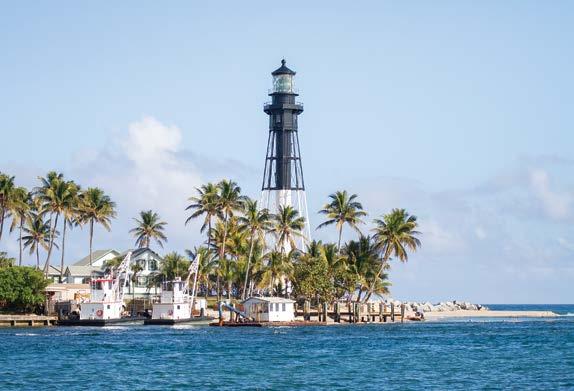

MarineLab
Wahoo Bay
Schmidt Ocean Institute
We invite you to join us and the following groups on this fabulous journey.
Advanced Roofing BBX Capital Bergeron Everglades Foundation Bergeron Land Development Brightmark Junior Achievement of South Florida Broward County Sheriff’s Office Broward Workshop City Furniture Congressman Brian Mast Discovery Education Everglades Foundation Florida Department of Education Florida Lottery Florida Power & Light Florida Prepaid College Foundation Florida Virtual School FishAngler Fish & Wildlife Foundation of Florida Greater Ft. Lauderdale Chamber of Commerce Hudson Capital Group Lifestyle Media Group MarineLab NOAA National Parks Conservation Association Nova Southeastern University Ocean First Education Publix Supermarkets Representative James “Jim” Mooney Resolve Marine Schmidt Ocean Institute SeaWorld Senator Lauren Book Shipwreck Park Pompano Beach South Florida Ford Dealerships St. Joe Community Foundation Teachers everywhere The Restaurant People Two Rivers Ranch Wahoo Bay West Marine Winterfest/DTG Group Wye Foundation
MEET THE TEACHER COMMITTEE
For the past year, the GHOF teacher committee has been working diligently, often late into the night, on the Guy Harvey Shark Collection, an integrated lesson plan for K-12 students and teachers. Our appreciation of their work, and that of all teachers during the pandemic, cannot be overstated. The Shark Collection will debut during the Spring of 2021. Thanks to those in this article for their dedication to the project.
ASHLEY M. HARVEY
Ashley M. Harvey has taught in the Florida Public School system for 15 years, working in Leon County and her hometown of Miami. She has a bachelor’s degree in elementary education from Florida A&M University, a master’s degree in educational leadership and policy studies from Florida State University, and a master’s degree in curriculum and instruction with a concentration in math K–14 from Concordia University. She has taught grades 2–5, held various school-based teacher/leader positions and has been a part of many communitybased organizations.
BARBARA DAVIS
Barbara Davis earned her bachelor’s degree from the Cleveland Institute of Art in 1984 with an emphasis in ceramic sculpture. She
then spent six years in Botswana with the Peace Corps, first as a volunteer teaching agriculture to high school students, then the last three years preparing new volunteers for their placement in country. In 1993, she earned her master’s degree at Florida State University and taught photography at FSU. For the next 10 years, she worked in education reform with SERVE. At age 42, she switched back into the classroom when she joined the art department at Florida State University School, a K–12 public charter school associated with Florida State University.
COURTNEY STARLING
Courtney Starling is the secondary mathematics specialist within the Bureau of Standards and Instructional Support at the Florida Department of Education. Prior to joining the department, Courtney had experience as a high school mathematics teacher. She attended Florida State University and earned her Bachelor of Science in geography and Master of Science in curriculum and instruction, mathematics. Courtney has a passion to help students believe that they are mathematicians and recognize how mathematics is embedded around them every day.
ERIN BRACK
A Florida native and active diver, Erin Brack has worked for Bay District Schools in Florida teaching a variety of science classes the past 20 years. She currently serves as the elementary science instructional specialist. She earned a bachelor’s degree from Tulane University in sociology and in E.E.O. biology, and she holds a master’s in education from Florida State University. Erin also received a master’s degree from Miami University’s Project Dragonfly Global Field Program, where she studied the impact of palm oil plantations on orangutans in Borneo, the health of the Great Barrier Reef in Australia and island biogeography in Baja, Mexico.
JENNIFER INFINGER
Jennifer Infinger is the STEAM Education Specialist for the Florida Department of Education, and she boasts over 13 years of arts education and arts integration experience. She previously served as the School and Family Programs Manager at the University of Florida’s Harn Museum of Art, the Fine Arts Education Specialist at the Florida Department of Education, and the Education Coordinator at LeMoyne Center for the Visual Arts. Jennifer earned her bachelor’s degree in the history and criticism of art and her master’s in art education — both from Florida State University.
JENNIFER SCHMITT
The TSA for K–12 science in Santa Rosa County, Jennifer Schmitt has taught many science subjects, including
marine biology, biology, anatomy and physiology, physics, life science, preengineering, and integrated science. She loves all things hands-on, and in her spare time, Jennifer can be found on the water or hiking in the mountains.
DANIELLE KNAPP
With 18 years experience in education, Danielle Knapp has taught in California, Mississippi, Virginia and now Florida. An avid staff developer the past five years, she also had the opportunity to teach conversational English in Japan for two years. A co-curriculum writer for the AVID Science Summer Bridges program, Danielle collaborated for the past three years on a standards-based training called STEAMposium for the state of Florida. Currently working for Lee County school district as the secondary science specialist, she says she loves “all things that involve the water — being near the water, in the water, and studying the living things in the water.”
KATHY NOBLES
Kathy Nobles is the Bureau Chief of Standards and Instructional Support for
the Florida Department of Education. Prior to joining the department, Kathy had experience as an assistant superintendent, state data captain/regional data coach, K–8 principal, consultant at the Panhandle Area Educational Consortium, media specialist, elementary classroom teacher and para-professional. She earned a bachelor’s in elementary education and a master’s in library and information studies from Florida State University. Kathy obtained her educational leadership credentials through Florida A&M, and she earned Ed.S. and Ed.D. in curriculum and instruction from the University of West Florida.
KRISTIN TYLER
Kristin Tyler is currently a middle school art educator for Lake County public schools. A self-proclaimed “jack of all grades,” she has a passion for sharing knowledge and helping students discover their why over the course of the past 10 years. Tyler began her career in education as a Reading Interventionist for the Florida Center for Reading Research before moving into the private school setting in North Florida. Tyler holds Bachelor of Arts degrees in both studio art and art education from Florida State University. Outside the classroom, she works with small businesses and restaurants as a brand strategist and photographer through her business Anchor & Odyssey.
LARK KEELER
Lark Keeler is a visual art instructor at NSU Art Museum and Saint Andrew’s Lower School. Over the past 20 years, she has taught visual arts in schools and museums, working with students of all ages and abilities throughout the communities of Florida. Ms. Keeler was awarded the Florida Art Education Association’s Museum Educator of the Year in 2010; since then, she has participated in the National Guild for Community Arts Education Leadership Institute and the NAEA School for Art Leaders. She now serves as a board member for the Florida Alliance for Arts Education.
LESLEY KIRKLEY
Lesley Kirkley holds a master’s degree in curriculum and instruction and currently serves students and teachers in Pasco County, Florida, in the role of senior instructional specialist for K–8 science. Lesley was
a classroom teacher in the state of Florida for 14 years prior to shifting her focus to developing science curriculum and supporting science teachers. Lesley served on the development and facilitation team for the state’s standards-based professional development STEMposium Summer Conference. She shares her passion for science education with other educators through presentations at NABT and the NSTA STEM Forum. Lesley is passionate about the importance of science education to promote scientific literacy for global citizenship.
NANCY NARVAEZGARCIA
Nancy Narvaez-Garcia is the K–12 science program specialist for the Florida Department of Education. She was born in Miami and moved to Tallahassee to attend Florida State University. After graduating, Nancy remained in Tallahassee and taught middle school science in Leon County. She has worked in many roles at the district, school and community level — such as pacing guide and district assessment developer, representative at the Title I Advisory Council and school advisory council, and maintained an active role in community conversations that surrounded her students. Aside from learning and teaching, Nancy enjoys pottery and hiking.
SHERWIN SALOMON
Born in Brooklyn, New York, but raised in Broward County, Florida, Sherwin Salomon has always enjoyed mathematics and, later, science. As a child of Haitian immigrants, his mother would always say, “No matter what choices you make, make sure you do good in school and get a good education.” Understanding the value of education, Sherwin decided to officially go into education as his professional career. After attending the University of Central Florida and Stetson University, Sherwin spent a professional teaching career in Orange County before transitioning to Florida Virtual School as a math instructor and then curriculum specialist.
TAMMY DANIELSON
The current K–12 mathematics specialist for Escambia County, Florida, Tammy Danielson previously served as a STEM Specialist with the Florida Department of Education, the district
instructional coach for Escambia County, and as a mathematics educator. A graduate of the University of West Florida, Tammy has served on many state committees, such as Test Item Review, Achievement Level Descriptors development, Standard Setting, and most recently on the committee for the B.E.S.T. Standards with the Florida Department of Education.
VALERIE GAYNOR
A graduate of Southeast
Missouri State University,
Valerie Gaynor describes herself as a mix of unyielding passion for learning, a little craziness in the classroom, and a pinch of the ocean blue.
Over the course of 20 years in education, Valerie has changed her classroom from the four walls of a school to an open world of nature that entices students to learn more, do more and question more. One of her current projects is coordinating with the Florida
Department of Education on the development of Guy Harvey STEAM Collections.
“Through my work with the Guy Harvey Ocean
Foundation,” Valerie says,
“we are working to ignite the passion in teachers to increase our reach for all students. This is truly a labor of love and respect for our watery world.”
WOMEN IN OCEAN SCIENCE

BY STEPHANIE MACDONALD
Women in Ocean Science is a global network and community to inspire, connect and empower women in marine science. Marine biologists, conservationists, chemists, oceanographers and casual ocean advocates all have a space to share their stories, research and experiences, have their questions answered, and interact with like-minded marine scientists.
The organization was founded by Madeline St. Clair, an ocean advocate, tropical marine biologist (MSc) and PADI divemaster. Our mission is to celebrate women, strive for equality and diversity, tackle sexual harassment in the workforce and create resources and opportunities for women in ocean science.
Stephanie Macdonald

Excerpt from Diversity in Ocean Science: A Collection of Personal Experiences by Black Women in Marine Science, A Foreword by Stephanie Macdonald
“As a tropical marine ecologist, I have spent countless hours surveying the reef and measuring diversity. Biodiversity measures help us to understand the health of an ecosystem. A diverse landscape provides vast environmental services and is indicative of an ecosystem that can recover from environmental challenges. Despite the focus of biodiversity in our work, we lack equity, diversity and inclusion in the workforce.” Stephanie Macdonald is a marine biologist and conservationist who both focuses on the science of biodiversity while also advocating for increased diversity in marine science.

Excerpt from Marine Molecular Biology: An Interview With Yasmin Meeda
“Marine molecular biology is a broad field within the scope of marine biology, and while some scientists use molecular tools to answer ecological problems, others can use them to aid human technological advances. The main idea behind this field is that we, as scientists, use similar tools to other molecular biologists, but rather than studying mice, plants or humans, we study marine organisms. An overview of the different types of marine molecular biology research areas includes virology, genetics, microbiology and immunology.” A marine molecular biologist, Yasmin Meeda expects that her field will both protect the oceans while also benefiting mankind, such as through pharmaceuticals or biofuels.
Yasmin Meeda
Maisy Fuller Niki Cesta


Excerpt from Marine Education: An Interview with Maisy Fuller
“What I love most about being a marine educator is watching how my students’ perspective of the environment changes throughout an education program. Th ere is simply nothing more inspiring than watching students transition from not knowing or caring about the ocean to being passionate, educated and environmental stewards. I want to use my voice for this to teach people of all ages about the wonders of the underwater world and ignite their love for the environment. I hope every one of my students leaves my classes gaining new knowledge and feeling inspired to make a positive environmental impact.” Maisy Fuller, a marine educator and conservationist, hopes to inspire the next generation to care for the environment.
Excerpt from Niki Cesta: How A Woman Inspired an Island with The Wasteland Plan
“One person or one small community can create a wave that is carried by global winds. From the ground up, let’s each work individually to live within the system for environmental change. Let’s each tackle this crisis creatively and de-vilify plastics. Be conscious of our personal consumption each day and begin to view the plastics that are already here to stay as a resource rather than a product in a wasteland. I have facilitated wasteland plan beach cleanups along 31 diff erent coastlines within fi ve other countries. Starting in Canada and moving in order through Little Cayman Island, Panama, Costa Rica and Italy.” Niki Cesta routinely spends her weekends collecting plastic waste, inspiring the locals of Little Cayman to do more about the local plastic crisis.
Over the next year, our blog will showcase women in ocean science with diverse articles exploring the seven continents and fi ve oceans, starting with North America and concluding with the Arctic. The blogs will focus on current research and discoveries in the fi eld of ocean science, from marine microbiology to marine policy.
HOW TO GET INVOLVED AND JOIN OUR COMMUNITY
Website: WomenInOceanScience.com
Instagram: @WomenInOceanScience
Facebook Page: Women in Ocean Science
Facebook Group: Women in Ocean Science
Twitter: @WomeninOceanSci
We are always looking for women to feature on our social media channels. Please send 1–5 photos of yourself partaking in ocean science and a short 100-word bio with your name and Instagram handle to media@womeninoceanscience.com.



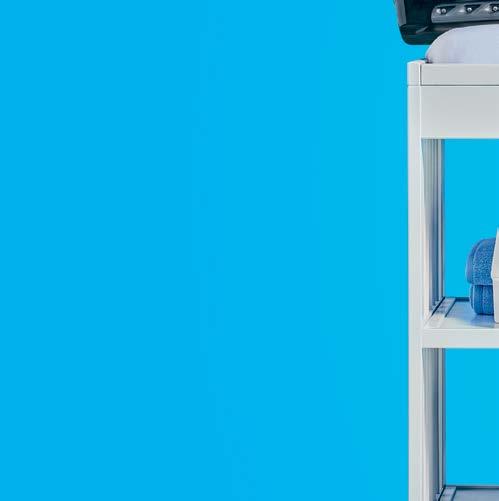
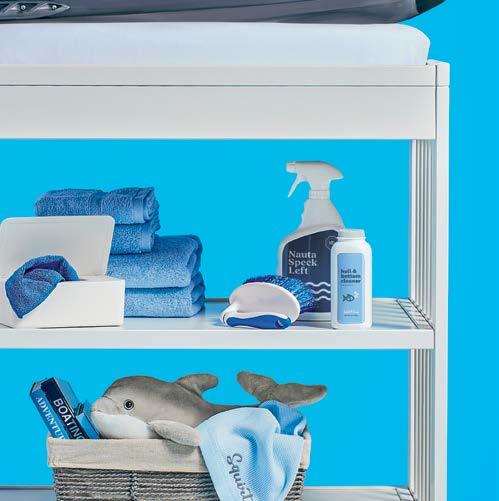




MARINE SCIENCE TEACHER OF THE YEAR
BY VALERIE GAYNOR
Katherine O’Fallon, the Marine Science Magnet Coordinator at New River Middle School (NRMS) in Fort Lauderdale, Florida, has been sharing her passion for marine science and education since she began her teaching career in 2006. As a marine biologist working in the field, she discovered that her passion was not in research but in sharing her knowledge with future generations. She learned early on in her career that her greatest joy came from watching children discover their passion for marine science and sharing it with others. As a classroom teacher, her students were inspired by her passion and knowledge. When Katie became the Magnet Coordinator almost nine years ago, she was able to have a larger impact in the school and the community. The partnerships she has cultivated — such as with Dr. Guy Harvey, who designed the school’s logo — have strengthened relationships, school exposure and, more importantly, opportunities for their students in the marine field and industry in South Florida.
Katie’s goal is to inspire her students to get involved in their own backyard, learn about the marine environment and then get even more involved. By exposing NRMS students to the marine and environmental issues in their classroom, it fosters stewardship and encourages students to be proactive in preserving and protecting our local habitats. Her school encourages involvement in the community with their annual International Coastal Cleanup and BBQ, along with Marine


Industries Waterway Cleanup. As magnet coordinator, Katie also organized a variety of field experiences to help students experience the marine environment through snorkeling trips in Fort Lauderdale and the Keys, kayaking through the mangroves, canoeing at Jonathan Dickinson State Park, trips to Miami Seaquarium, state park educational activities, and visits to Fort Lauderdale Boat Show and Resolve Marine Academy.
Every year, Katie also encourages her students to participate in the Plywood Regatta, where teams build and race boats with the Marine Industries Association of South Florida. Because of Katie, the NRMS has received the Magnet School of Distinction for five years, along with becoming a Nationally Certified Magnet School. Katie has also been instrumental in NRMS being recognized as the Broward County P3 (Preserving our Planet for Posterity) Eco-Challenge over the past six years. She works tirelessly writing grants and finding resources so that more of her students can have the opportunities to get out into the marine environment and be involved in the ever-growing world of science engineering. That includes the very popular Marine ROV (Remotely Operated Vehicles) course, along with new opportunities that include robotics, entrepreneurship and engineering and design.
Katie wants her students to be exposed to all facets of the marine field, from the environmental and biological to the maritime and engineering side of the yachting industry. She prepares her students for their future, pushing them to pursue their passion and inspirations. No matter where their future takes them, NRMS students have a deep passion and appreciation for their backyard of South Florida and continue to help preserve and protect it because of what they learned from Katie and New River Middle School Marine Science Magnet.
Katie O’Fallon’s students from New River Middle School build and race boats in the Plywood Regatta in South Florida.


Grand Challenge to Award $650k in 2021
BY LOUISA SAX
Technology has allowed us to break barriers, push boundaries, manipulate the landscape, and access previously impossible-to-reach natural resources. Advances in fi shing gear, for example, have enabled us to harvest deeper, further and smarter in order to satisfy an ever-increasing global demand for seafood — and to give recreational anglers a better chance at catching the big one.
Th e miracle of technology has been applied to almost every aspect of life, providing huge benefi ts to education, research, travel, convenience, choice, luxury and capitalism.
But we are now facing a turmoil of consequence. Earth is warming; animals are violently losing their homes to deforestation, which in turn is fl ooding the atmosphere with once-sequestered carbon dioxide; the disruption of natural water fl ows are starving vital ecosystems of fresh water; and the sea could contain more plastic than fi sh in just a few short decades. Humans created these problems. But can we solve them as well?
Th ere is no doubt that technology has exacerbated environmental issues, but innovation companies such as Conservation X Labs believe that we can harness the exponential power of technology to reverse those trends.
Technology is the next generation of conservation.
Conservation X Labs is a technology company that spurs solutions to the extinction crisis and believes that “open innovation, collaboration across disciplines, and community engagement are the keys to generating worldchanging ideas, and that many minds working together can refi ne them to achieve big things.”
To accomplish their mission to end humaninduced extinction, Conservation X Labs empowers a global community of innovators to use their unique talents to spark, develop and collaborate on solutions that address the drivers of extinction. By “harnessing planetary genius,” they aim to build replacements, engineer resilience and improve enforcement, and with the theory that “innovation happens at the intersection of disciplines,” they call on thinkers from all industries to contribute their skills to envision and create these complex solutions to conservation.
One potentially transformational invention is the Nucleic Acid Barcode Identifi cation Tool, or NABIT, which is a handheld genetic device for the frontlines of conservation that allows anyone, anywhere, at any time to confi rm species’

Conservation X Labs is a technology and innovation company that creates solutions to stop the extinction crisis.


Top: CONX co-founders Dr. Paul Bunje and Dr. Alex Dehgan launch their Grand Challenges for Conservation.
Bottom: Dr. Hal Homes, lead conservation product engineer, and David Baisch, molecular innovations director, display an early prototype of the NABIT. identity through modern DNA barcoding techniques. The potential applications for this technology will be momentous in addressing the illegal wildlife trade, fish traceability (is that really grouper on your plate in your favorite restaurant?), and detecting pests and pathogens of wildlife and humans.
An interdisciplinary community of conservation innovators is brought together on The Digital Maker Space, an open online community platform for engineers, entrepreneurs and conservationists to connect and launch bold new ideas to end the extinction crisis. Ideas that have been sparked on the platform include a low-cost, deep ocean camera trap, an app to find and support local conservation efforts, and a lineless lobster trap to prevent whale entanglement.
Conservation X Labs also leads innovation competitions, including their Grand Challenges for Conservation, awarding cash prizes for the best solutions to a specific conservation issue. The competition stimulates markets by building awareness around that issue and structuring a community of problem solvers and entrepreneurs around finding potential solutions. Previous Grand Challenges have sought solutions to tackle issues in ocean conservation, invasive species, climate change and freshwater ecosystems. Finalist innovators in each challenge have been awarded millions of dollars in prizes and further opportunities for partnership to advance their innovations.
Conservation X Labs launched their latest Grand Challenge for Conservation, Microfiber Innovation Challenge, in January 2021. The challenge is focused on “the big problem too small to see” — plastic microfiber pollution — which comes from many of the textiles we use in our everyday lives. The challenge is looking for solutions to replace textiles that are sources of plastic microfibers, and/or develop new textile manufacturing processes to decrease microfiber shedding. Anyone, anywhere with an innovation idea can apply for $650,000 in prizes by the submission deadline of June 25, 2021.
The Guy Harvey Research Institute (GHRI) uses satellite tag technology to track and analyze the migratory behavior of large pelagic species, including sharks and billfish. This technology has contributed information on key habitats and migratory corridors, growth and mortality rates, and interactions with commercial fishers providing data that has influenced changes to wildlife conservation policy on an international level. In 2018 for example, GHRI was able to present, through fisheries independent data, that 30% of tagged shortfin mako sharks were harvested in the Northwest Atlantic. This led to emergency NOAA protections for the species, which were ultimately awarded a CITES Appendix ii listing.
However, rapid advances in conservation technology are still necessary so that conservation can operate at the speed and capacity necessary to keep up with — and overcome — environmental issues.
By leveraging exponential technology and human ingenuity, we have the potential to provide solutions that have real life applications that can transform the future. Technology is the future, and a global community of innovators is necessary. You too can join the community of innovators creating new technologies to protect the planet.
INSHORE, NEAR SHORE, OFFSHORE
From start to finfish, Coastal Mississippi anglers have lots of options
By Steve Bornhoft
With the first warm weather of spring, the sea monsters arrive along the Mississippi coastline.
As a game fish, they are not a marquee species, but they run large and, said Capt. Sonny Schindler of Shore Thing Charters in Bay St. Louis, “I’ve got people who fish with me, and that’s all they want to go after. You can tell them the speckled trout are stacked up in the marsh, and they’re not interested.”
What Schindler calls sea monsters are commonly referred to as black drum, a close cousin to the far more popular redfish.
Schindler and the guides who pilot the seven boats in the Shore Thing fleet are adaptable. And, Mississippi’s saltwater fishing playground, including marshes, bays, reefs and barrier islands, is diverse enough to present anglers with lots of options.
At the opposite end of the continuum, a veteran angler may be willing to devote a trip to trying to catch his first tarpon on a fly. One Shore Thing guide, fishing from a Tideline catamaran, likes to take clients offshore for red snapper.
It is true, then, that a person can generalize about Shore Thing trips and fishing in Coastal Mississippi only to a limited extent.
“We offer phenomenal and unique fisheries, and what further distinguishes us is everything else we have to offer,” said Milton Segarra, CEO at Coastal Mississippi, the tourism entity representing Mississippi’s three coastal counties. “There is nothing more rewarding than having a great day on the water and then joining with family or friends at a restaurant, bar, casino or other attraction.”
Segarra suggests that visitors planning a multi-faceted, land-and-sea trip consult coastalmississippi.com for information on all that the region has to offer.
More than 75 percent of people who visit Coastal Mississippi come back for more.
Most of the fishing takes place inshore or near shore, from backcountry sloughs to grass flats and artificial reefs made up of Hurricane Katrina debris.

#VisitMSResponsibly

Speckled trout and redfish are favorite targets, but a day’s catch might also include flounder, tripletail, sheepshead, jack crevalle and mackerel. An angler mopping up on specks may suddenly find himself dealing with a fish of another color.
Schindler had a client on board who was steadily catching a mixture of speckled trout and white trout in three feet of water when a bull redfish happened by and sucked up his soft plastic lure.
Ten minutes later, a 46-incher hit the deck, the longest red that an angler fishing with Schindler has ever caught.
Family vacations and corporate trips account for most of Shore Thing’s business. Novices outnumber experienced outdoors enthusiasts.
“We have live bait on all of our trips,”
Biloxi Beach

Schindler said. “Call it insurance. But our goal is to find the bite and then switch anglers (even rookies) over to artificials. But, if someone is content to soak a shrimp and watch a cork go under, that’s fine by us.”
Schindler, as it happens, usually throws Matrix lures, made in Slidell, Louisiana, about 20 minutes from his dock.
Shore Thing conducts multi-day trips out of a house on Cat Island, seven miles offshore.
“It’s not a cabin; it’s not a camp. It’s like you plucked a house out of a very nice gated community and dropped it on the island,” Schindler said.
The three-story hostelry, owned by two physicians and leased by Shore Thing, sleeps up to 14 people. What Shore Thing bills as its “Cat Island Experience” goes for a package price that includes everything but alcohol. Shore Thing guides and a caretaker who lives year-round at the house take turns handling the cooking. Visitors may take a break from fishing to watch an SEC football game on DIRECTV.
Groups visiting the house must number at least six people and stay at least two nights. Cat Island season runs from late March to early November. Throughout those months, the island hosts stunning numbers of shorebirds and seabirds including frigate birds, spoonbills, oyster catchers, herons, egrets, eagles and ospreys.

Milton Segarra, CEO, Coastal Mississippi
Steve Bornhoft is the executive editor at Rowland Publishing Inc. in Tallahassee, Florida.
Sonny Schindler
After receiving care at SeaWorld Orlando, a Kemp’s ridley sea turtle is released back into the ocean with help from a member of SeaWorld’s Rescue Team.
